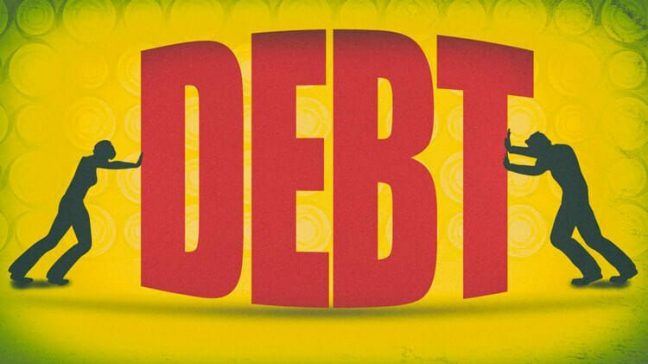Debt consolidation is something that either strikes fear into your heart, or opens up a world of opportunities and allows you to finally tackle your debts. There are many reasons to be wary of debt consolidation, but as long as you’re responsible about it, this can be an excellent option for debt-reduction.
There are many debt consolidation options out there, so today I want to go over what they are, in what situations they work best, how to choose the best option for you, and ways to avoid common drawbacks.
What’s Ahead:
- Let’s start with a brief overview of debt consolidation
- Option one: A balance transfer
- Option two: A home equity loan or line of credit
- Option three: Personal or debt consolidation loans
- Option four: Borrow from life insurance and retirement plans
- Get started now by looking into online lenders
- How do I spot the best debt consolidation option?
- Make sure you know how to avoid the possible pitfalls of debt consolidation
Let’s start with a brief overview of debt consolidation
Debt consolidation is a relatively straightforward process: You take multiple debts, combine them into a single debt, and move forward dealing with that one, more manageable debt. It’s no wonder that people are so intrigued with this debt-relief option, right?
One of the things people like most about debt consolidation is that it takes multiple smaller payments, each with its own due date, interest rate, and term, and rolls it into a single loan with one payment date, one interest rate, and one term.
This debt-reduction option comes with a number of benefits, including a smaller monthly payment (usually), less stress, fewer headaches, and fewer bills to worry about.
Debt consolidation comes in many forms, and each one has its own pros and cons to address.
Option one: A balance transfer
The first debt consolidation option you can look at is transferring all your debts to a single credit card. This is an especially appealing option if you’re able to secure a low-rate credit card or at least one that offers an introductory low interest rate that lets you tackle the principal.
This type of consolidation works best when there’s a low transfer fee, which can be anywhere between two and four percent of the balance you transfer. Similarly, if you’re only getting a low introductory rate, pay attention to how long it lasts. Generally, it’s 18 months max.
Also, it’s best to avoid adding new purchases to the card once you’ve transferred the balance. These new charges will have the regular interest rate. Finally, this works best when you have a manageable amount of debt that you’ll be able to pay down before the low rate expires.
Option two: A home equity loan or line of credit
Homeowners are in luck because you can use the equity you’ve built up on your home to secure a loan or line of credit to use for debt consolidation. What people like most about these types of loans is that they have a much lower interest rate than credit cards and other loan types.
Another good thing about the home equity option is that you’re exchanging bad debt for good debt. Good debt—which refers to things like student loans and mortgages—is one that rewards you in the end.
One crucial detail to mention about this option, however, is how careful you have to be. When you take out a home equity loan or line of credit, you put your house on the line. If you default on your payments, you could lose your home.
What’s the difference between the loan and line of credit? The loan dissolves when you finish repaying the principal and interest, whereas the line of credit can be used again and again: As you pay off the balance, that money is freed up for you to use again.
Option three: Personal or debt consolidation loans
There are several different types of loans you can apply for that will allow you to replace your multiple debts with a single one. Personal loans are one such option, and there are several options you can apply for online (more on that later).
One benefit of a personal loan is that it doesn’t require collateral, meaning you don’t have to put your house, car, or other assets on the line to secure the loan. Typically, you need a good credit score to obtain these loans, especially if you want a reasonable interest rate.
FreedomPlus is just one of the many great personal loan options for debt consolidation. You can borrow between $10,000 and $40,000 from FreedomPlus. You’ll get an interest that can range from 6.99 percent to 29.99 percent APR, and you’ll have anywhere between 24 and 60 months to pay off your new loan.
Another option to explore is a specific debt consolidation loan, which can come from a bank or debt consolidation company.
FreedomPlus Disclaimer:
Option four: Borrow from life insurance and retirement plans
Instead of taking out a specific loan or opening a new credit card, another option you can pursue is borrowing against your own retirement savings or a life insurance policy.
With a retirement account loan, you take money from the savings you’ve already put away for retirement and use it to pay your debts. Then, you repay what you received from the retirement plan, plus interest to yourself.
These loans are typically easy to qualify for, but you’ll have to pay penalties and income taxes if you don’t pay the loan back on time. Because of the risks, this is generally used as a last resort if you don’t qualify for another loan or credit card and don’t have equity to borrow against.
The other option is borrowing against a life insurance policy. Most insurers will let you borrow up to the cash value of the policy. A word of caution: Your beneficiaries may be left high and dry if anything should happen to you before you repay the loan.
Get started now by looking into online lenders
As promised, now it’s time to talk about online loans and how you can get going on your debt consolidation plan right now. Three of the best and most reputable online lenders are Lending Club, Avant, and PersonalLoans.com.
Lending Club offers personal loans up to $40,000, and they have competitive rates. Because they’re peer-to-peer loans, they tend to be more discerning about who they approve, and the max term you’ll get is 60 months. Here’s our full review of Lending Club.
Avant tends to approve loans faster than Lending Club, and they’re geared toward borrowers with lower credit scores. As such, you’ll have higher interest rates, and you’ll be subject to late payment fees. Here’s our full review of Avant.
PersonalLoans.com has a variety of loan types available for amounts up to $35,000. You may not be able to find out in advance what kind of interest rate you’ll get, but the rates are competitive. Here’s our full review of Personalloans.com.
How do I spot the best debt consolidation option?
No one debt consolidation solution works for every borrower. To determine your best options, you have to start by looking at the loan amount you’ll require to pay off your debts.
From there, figure out what kind of monthly payment you can afford. Check your credit score to see the interest rate you might be eligible for. You’ll also have to take into consideration the type of term you want and what you can afford each month.
When researching your options, always look for hidden fees, penalties, and other fine print that could influence your decision. Take the time to look carefully, and consider having someone else read it over too, in case you miss something.
For borrowers who have the option available, home equity loans and lines of credit are typically the favored debt consolidation option. After that comes a loan or balance transfer, with retirement and life insurance borrowing coming in last.
Make sure you know how to avoid the possible pitfalls of debt consolidation
Debt consolidation is a great option for some people, but for others, it can be a poisoned chalice. This is especially true if you don’t address the bad habits that led to the problem in the first place.
For starters, make sure you pay back the loan and don’t add to your debt as you pay it off.
Other things to watch out for are fees and penalties because these could make the endeavor more expensive than just paying off the individual debts. Be wary of debt consolidation and management companies, because there are often fees associated with their services.
Also understand that if you have a lower monthly payment you’ll end up with a longer term, and you could pay more in the long run.
Unless you really can’t make ends meet and can’t make minimum payments right now, then another solution might be better.
Summary
Debt consolidation can be a great debt-reduction strategy, but only if you address the bad habits that led you into debt in the first place. Moreover, debt consolidation, while not always an ideal solution, is far superior to filing for bankruptcy or waiting for a charge-off.
The primary options available to you for debt consolidation include balance transfers, loans, and borrowing against savings, policies, or equity. The right solution will be different for everybody.


